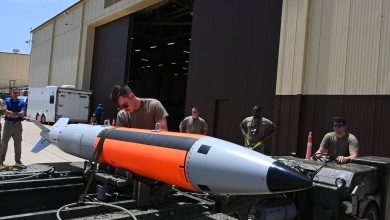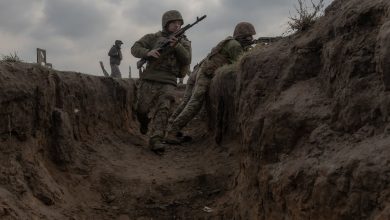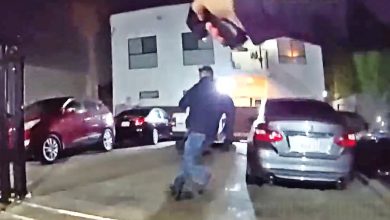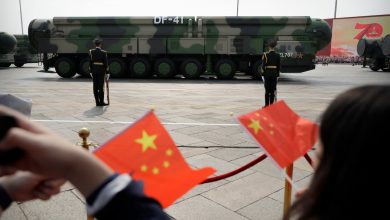Stratolaunch hits milestone with fully reusable hypersonic testbed
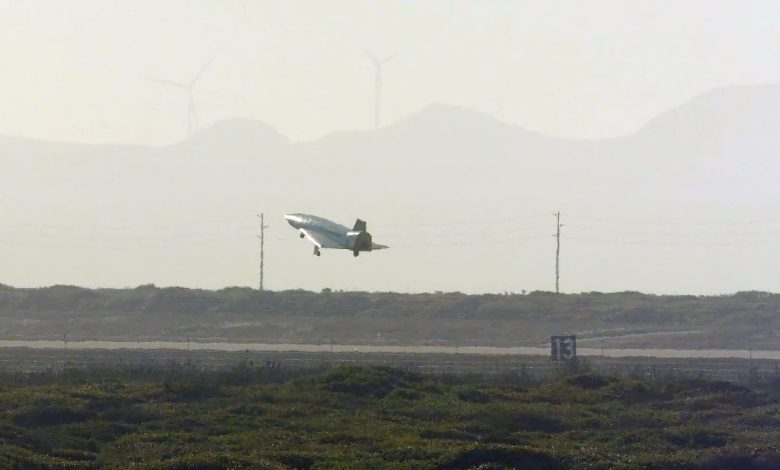
The Pentagon announced Monday that California-based firm Stratolaunch completed two hypersonic test flights with its Talon-A vehicle, recovering the testbed on both and making history as the first fully autonomous vehicle to reach Mach 5 speeds and live to tell the tale.
The flights were part of the Pentagon’s Multi-Service Advanced Capability Hypersonic Testbed program, or MACH-TB, and occurred three months apart — one last December and the second in March. Both met all of the Defense Department’s performance benchmarks within a 1% margin, according to Stratolaunch CEO Zachary Krevor.
“For the first one or two times going into the hypersonic regime, especially as we’re going faster, it’s a pretty incredible accomplishment,” Krevor told Defense News.
But perhaps the more critical milestone was the ability to recover the Talon-A vehicle, known as TA-2, after both flights. The U.S. hasn’t had a recoverable hypersonic aircraft since the X-15, which stopped flying in the late 1960s — and it’s never had one that’s fully autonomous.
Those attributes allowed Stratolaunch’s DOD customer, the Test Resource Management Center, to immediately recover and begin pulling data from the payloads it flew on TA-2. The ability to reuse the Talon-A will eventually make it a more affordable hypersonic testbed by “orders of magnitude,” Krevor said.
The lower the cost, the more accessible the vehicle is for DOD programs developing operational systems, whose demand for test opportunities far outpaces the Pentagon’s current infrastructure.
The Pentagon’s renewed push for hypersonic systems — which can travel and maneuver at speeds above Mach 5 — follows decades of waning investment following the unraveling of the X-15 program. As China and Russia make progress developing and even fielding hypersonic systems of their own, the Defense Department in recent years has shown a renewed interest in the capability, though it has still struggled to field an operational system.
To get after that testing challenge, DOD leaders have been on a path since 2022 to increase the department’s hypersonic flight cadence to around one test per week, and MACH-TB is a big part of that initiative. The program uses systems like Talon-A — as well as Rocket Lab’s HASTE rocket and Kratos’ Erinyes vehicle — to test components and subsystems in a realistic flight environment that mimics the harsh conditions hypersonic vehicles face.
Stratolaunch is on contract for five MACH-TB flights and will support a Missile Defense Agency test campaign later this year. Krevor said the company has a full flight manifest through 2025 and has started booking the Talon-A for 2026, but declined to comment on who those customers are.
While increasing Talon-A’s flight cadence is an overarching goal for the company, Krevor noted that for the first few tests, the emphasis is on expanding its flight envelope.
That means flying the vehicle faster, performing more maneuvers and maintaining hypersonic speeds for longer durations in each successive test. Talon-A was able to do that for its first two flights and Stratolaunch hopes to build on those metrics in future tests.
Krevor declined to provide a precise timeline for Talon-A’s next flight, but said it is slated for later this quarter, so by June. Between the March test and this next flight, the team has been working in parallel to analyze flight data in order to understand how various components performed during hypersonic flight and whether those metrics matched its predictions.
“Because we are also expanding that performance envelope and going faster and faster on every flight, adding more maneuvers, there still is a healthy data analysis period, and so we’re allowing that to really be the focus as opposed to dialing in the cadence,” Krevor said.
Krevor said the company will shift its focus to “dialing in” Talon-A’s cadence by the second half of this year, though he wouldn’t specify how many flights the vehicle would conduct.
Those later tests will also help validate modifications the company has been making to one of its launch platforms, a modified Boeing 747 jetliner called the Sprit of Mojave. Stratolaunch’s other carrier aircraft, Roc — a much larger, two-fuselage aircraft with a 385-foot wingspan — has conducted all of its flights to date, but having a second platform will allow the company to bring on more customers.
The 747 modifications are progressing well, Krevor said, and he expects the aircraft to start flying by the summer or fall.
Courtney Albon is C4ISRNET’s space and emerging technology reporter. She has covered the U.S. military since 2012, with a focus on the Air Force and Space Force. She has reported on some of the Defense Department’s most significant acquisition, budget and policy challenges.


